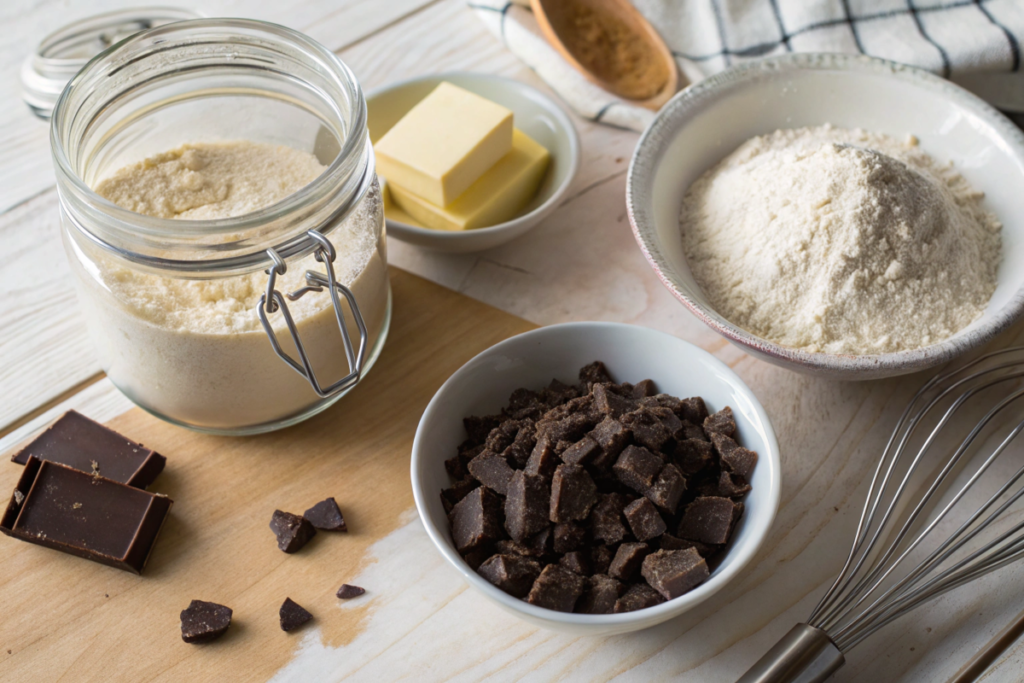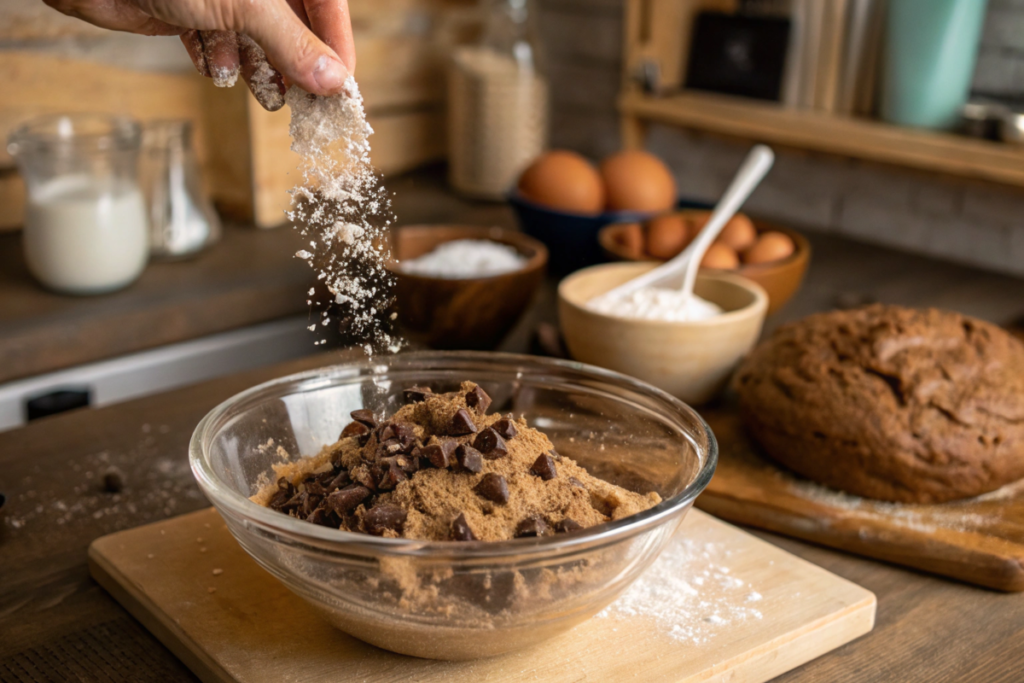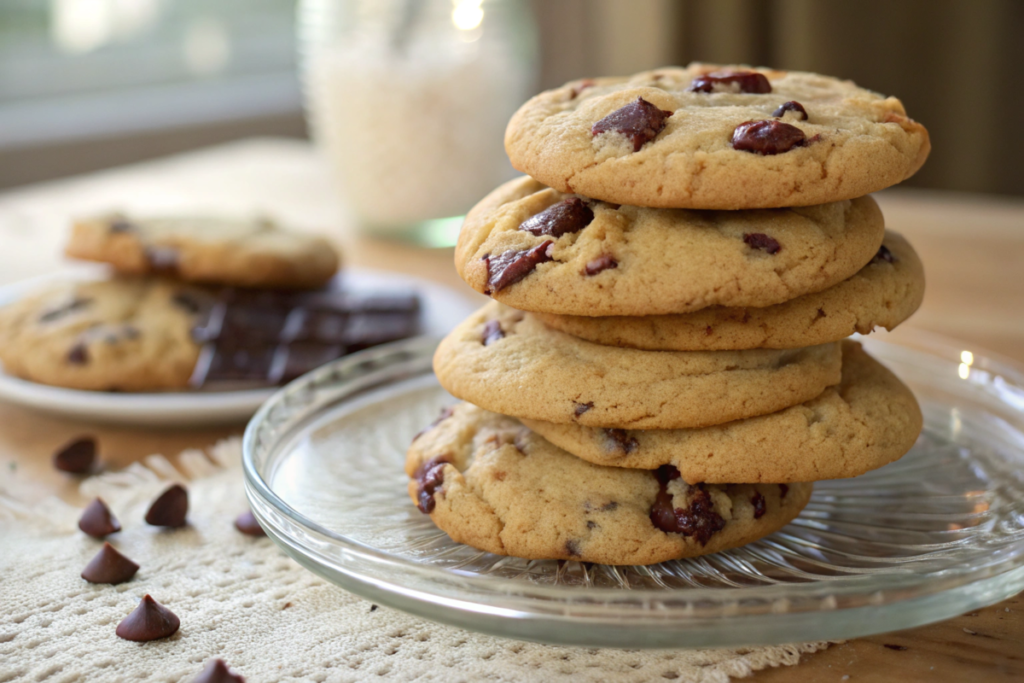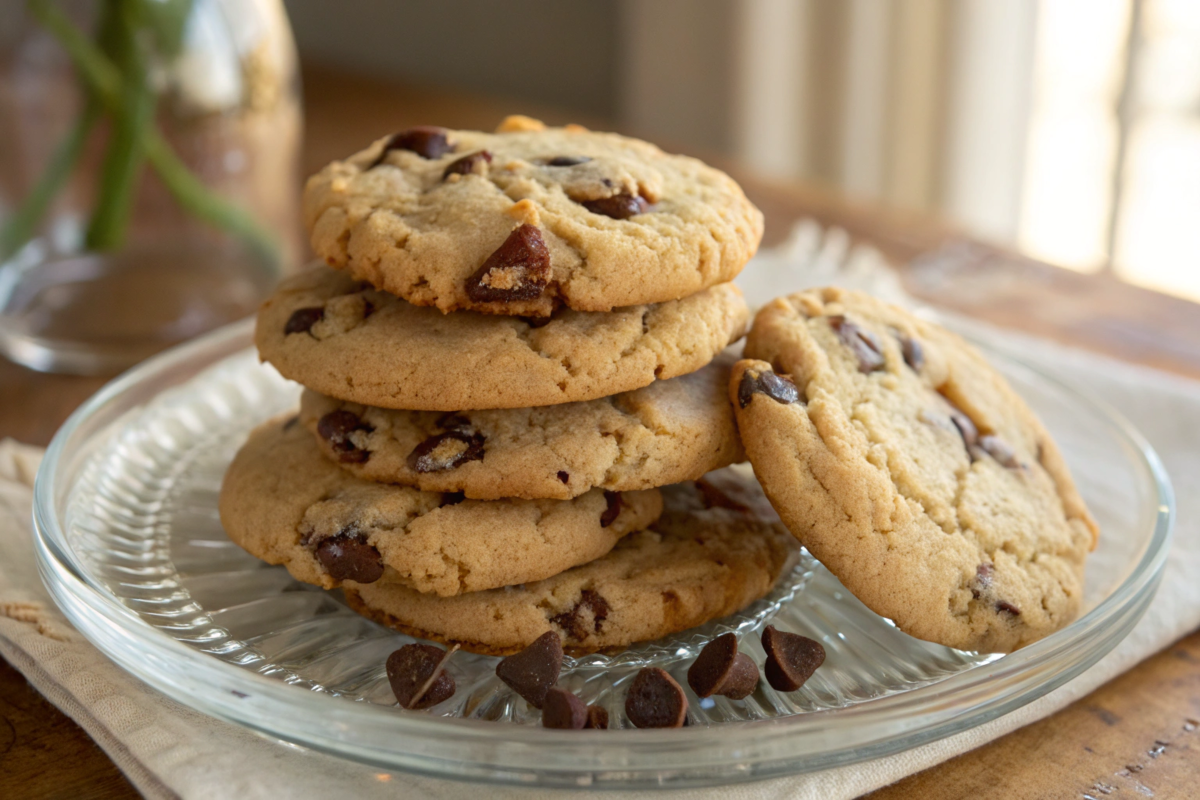Discovering Sourdough Chocolate Cookies
There’s something magical about combining sourdough’s tangy richness with chocolate’s irresistible sweetness. Sourdough Chocolate Cookies offer a unique twist on a classic dessert, blending the complex flavors of fermentation with melt-in-your-mouth chocolate goodness. Whether you’re an experienced baker or just starting, this article dives deep into everything you need to know to create these delectable treats.
Table of Contents
The Unique Fusion of Sourdough and Chocolate in Cookies
The world of baking is full of creative pairings, but the marriage of sourdough and chocolate is truly one-of-a-kind. Why? Because sourdough brings a subtle tanginess to cookies, balancing the richness of chocolate while adding depth to every bite. Unlike traditional cookies, sourdough versions are naturally leavened, meaning they use fermented dough for structure, enhancing the overall texture.
Chocolate, the star ingredient, works beautifully with sourdough. The fermentation process in the dough brings out nuances in the cocoa flavor you’d never expect. Whether you prefer dark, milk, or semi-sweet chocolate, each variety has a new character when baked into sourdough cookies.
Historical Background of Sourdough in Baking
Sourdough’s history is as rich and textured as the cookies themselves. Bakers have used sourdough starters for centuries to create everything from crusty bread to pastries. In ancient Egypt, sourdough was long prized for its natural leavening properties and health benefits. Fast-forward to today, bakers worldwide are rediscovering its versatility, including its surprising role in desserts like Sourdough Chocolate Cookies.
Not only does sourdough provide leavening without the need for commercial yeast, but it also contributes to the flavor and digestibility of baked goods. It helps create a soft yet chewy texture when used in cookies, setting them apart from regular cookies that rely on baking powder or soda.
Understanding Sourdough and Its Role in Cookies
Sourdough has long been a staple in traditional bread-making, but its role in cookies is an exciting and relatively untapped frontier. By incorporating sourdough starter into cookie dough, bakers can unlock various benefits that elevate the humble chocolate cookie into a complex, gourmet treat. Let’s dive into what makes sourdough special and how it works its magic in cookies.
What is Sourdough?
At its core, sourdough is a naturally leavened dough that relies on a sourdough starter—a live culture of flour and water—to ferment. This fermentation process is powered by wild yeast and beneficial bacteria, which cause the dough to rise and impart a tangy flavor. Unlike commercial yeast, sourdough requires patience, as the starter must be cultivated and maintained over time.
In the context of cookies, sourdough introduces subtle tangy notes that balance the sweetness of sugar and chocolate, creating a harmonious flavor profile. Additionally, its natural fermentation breaks down gluten, making the cookies easier for some individuals to digest.
The Science Behind Sourdough Fermentation
Fermentation is where the magic happens. When you feed a sourdough starter, the yeast and bacteria within start a symbiotic process. The yeast converts sugars into carbon dioxide, causing the dough to rise, while the bacteria produce lactic and acetic acids, which contribute to flavor.
This fermentation enhances cookie texture and taste. The acids tenderize the dough, producing soft, chewy, and full-of-depth cookies. Plus, the subtle sourness acts as a flavor enhancer, making the chocolate and other ingredients shine.
Benefits of Using Sourdough in Cookies
Enhanced Flavor Profiles
Sourdough cookies stand out because of their dynamic flavor. The slight tang from fermentation complements the sweetness of chocolate, creating a balanced bite that’s never too cloying. Whether you use dark chocolate for a bittersweet edge or milk chocolate for creamy sweetness, the sourdough accentuates the cocoa notes unparalleled.
Improved Digestibility
Sourdough cookies are a game-changer for those sensitive to gluten or looking for gut-friendly treats. The fermentation process pre-digests some gluten and starches in the dough, making them easier on your digestive system. While this doesn’t make cookies entirely gluten-free, it can be a better option for those with mild sensitivities.
Crafting the Perfect Sourdough Chocolate Cookies
Baking Sourdough Chocolate Cookies is an art; every ingredient is critical in shaping flavor and texture. From choosing the right chocolate to perfecting your sourdough starter, attention to detail ensures your cookies are nothing short of extraordinary. This section will walk you through the essential ingredients and a step-by-step guide to creating the ultimate batch of sourdough chocolate cookies.
Essential Ingredients for Sourdough Chocolate Cookies

You’ll need high-quality ingredients to create flavorful and texturally pleasing cookies. While standard cookie recipes rely on butter, sugar, and flour, sourdough versions demand more thoughtfulness.
Selecting the Right Chocolate
The type of chocolate you choose can transform the taste of your cookies. Opt for chocolate chunks or high-quality chips with at least 60% cocoa content for a bittersweet touch. Dark chocolate pairs beautifully with the tangy notes of sourdough, while milk chocolate offers a creamier contrast. Avoid overly sweet chocolate, as it can overpower the delicate sourdough flavors.
Importance of Sourdough Starter Quality
Your sourdough starter is the heart of this recipe. Whether freshly fed or a sourdough discard, its quality will impact the cookies’ texture and flavor. A bubbly, active starter lends a subtle rise, while a tangy discard adds depth to the flavor. Ensure your starter isn’t too acidic, as excessive sourness can dominate the cookies.
Step-by-Step Recipe for Sourdough Chocolate Cookies
Let’s break down the process to ensure your cookies come out perfectly every time.
Preparing the Sourdough Starter
- Begin with a healthy, active starter or discard.
- Feed your starter with equal parts flour and water, letting it sit for a few hours until bubbly.
- If using discard, ensure it has been stored properly to avoid any off-flavors.
Mixing and Baking the Dough

- Cream the butter and sugar: In a mixing bowl, beat softened butter and sugar until light and fluffy. This step ensures your cookies have the perfect texture.
- Add the starter: Incorporate or discard the sourdough starter into the creamed butter mixture, mixing well to blend the flavors.
- Sift dry ingredients: Combine flour, baking soda, and a pinch of salt. Gradually add this mixture to the wet ingredients, folding until just combined.
- Stir in chocolate: Gently mix your chocolate chunks or chips, ensuring even distribution throughout the dough.
- Chill the dough: Let the dough rest in the refrigerator for at least 30 minutes. This helps enhance the flavors and prevents them from spreading during baking.
- Bake: Preheat your oven to 350°F (175°C). Scoop the dough onto a lined baking sheet and bake for 10-12 minutes or until the edges are golden. Cool before serving.
Enhancing and Storing Your Cookies
Once you’ve mastered the basics of Sourdough Chocolate Cookies, it’s time to explore creative variations and practical storage tips. Adding your personal touch or ensuring long-lasting freshness can elevate your cookie game from great to extraordinary. Let’s explore how to customize these cookies to suit your preferences and maintain their quality for future enjoyment. But before we dive in, for another delightful sourdough dessert, try our rich and fudgy sourdough brownies and our Heavenly Hash Brownies for a chocolate-packed treat.
Flavor Variations and Add-ins
Incorporating Nuts and Dried Fruits
Adding a crunch or a burst of sweetness is an easy way to diversify your cookies. Chopped walnuts, pecans, or almonds bring a nutty richness that pairs beautifully with sourdough tang. Alternatively, dried fruits like cranberries, raisins, or cherries add a chewy contrast to the chocolate. For the adventurous, consider blending both for a delightful mix of textures and flavors.
Using Alternative Sweeteners
Want to experiment with different sweetness levels or flavors? Swap traditional white sugar for alternatives like coconut sugar or maple syrup. Coconut sugar imparts a subtle caramel note, while maple syrup adds depth and moistness. These variations enhance flavor and make the cookies feel healthier, especially for those avoiding refined sugars.
Storage and Shelf Life of Sourdough Chocolate Cookies
Best Practices for Maintaining Freshness
Proper storage is essential to keeping your cookies tasting freshly baked. Place your cooled cookies in an airtight container at room temperature, where they’ll stay soft and flavorful for up to five days. If you’re stacking cookies, separate the layers with parchment paper to prevent sticking.
Freezing and Reheating Tips
For longer storage, freeze your cookies! Arrange them in a single layer on a baking sheet and freeze until firm. Once frozen, transfer them to a freezer-safe bag or container, where they’ll keep for up to three months. When ready to enjoy them, thaw them at room temperature or warm them in a 300°F (150°C) oven for a freshly baked feel.
Addressing Common Questions
When baking Sourdough Chocolate Cookies, it’s natural to have a few questions about techniques, substitutions, and results. This section tackles the most frequently asked questions, helping you troubleshoot and refine your cookie-baking skills. By understanding the nuances of sourdough and its impact on your cookies, you’ll feel confident every step of the way.
Can I Use Sourdough Discard for These Cookies?
Absolutely! One of the best parts of this recipe is its flexibility. Using sourdough discard is an excellent way to reduce food waste while adding flavor to your cookies. Discard, slightly tangier than active starter, enhances the depth of the cookie’s flavor. Ensure the discard is fresh and hasn’t been sitting in the fridge for too long, as older discard can develop overly sharp or unpleasant notes.
How Does Sourdough Affect the Texture of the Cookies?
Sourdough introduces a unique texture to cookies. Thanks to natural fermentation, the dough becomes more tender, resulting in a soft and chewy interior. At the same time, the slight acidity of the sourdough balances the sweetness, creating a cookie that’s rich and complex in flavor. You might also notice a subtle crispness at the edges, offering the perfect textural contrast.
Are Sourdough Chocolate Cookies Healthier Than Regular Cookies?
While these cookies still contain sugar and butter, sourdough may offer some health benefits. Fermentation partially breaks down gluten and starches, making the cookies easier for some people to digest. The naturally leavened dough also has lower glycemic properties than standard cookies made with commercial leavening agents. That said, moderation is key, as they’re still a treat!
Tip: Experimenting with Sourdough for Healthier Cookies
Consider incorporating whole wheat flour or reducing sugar for a healthier twist. Sourdough’s fermentation process can help mask the bitterness of whole grains, ensuring your cookies remain flavorful and delicious.


